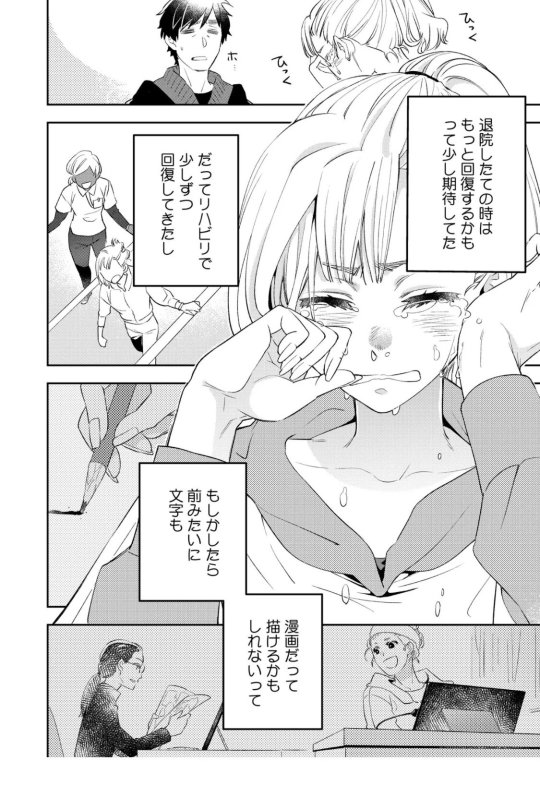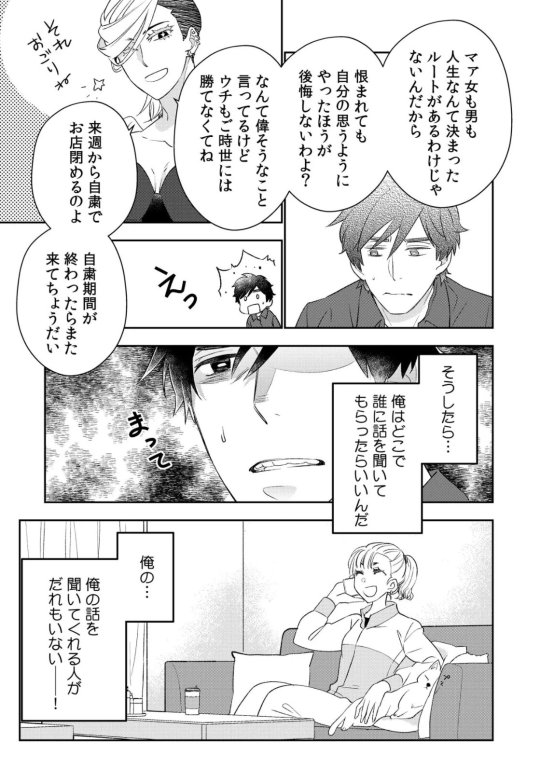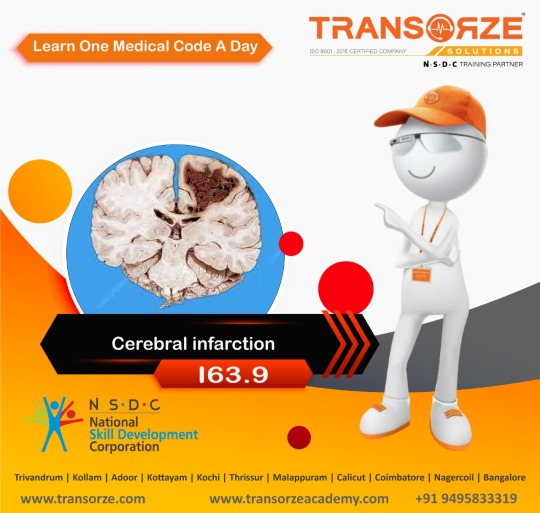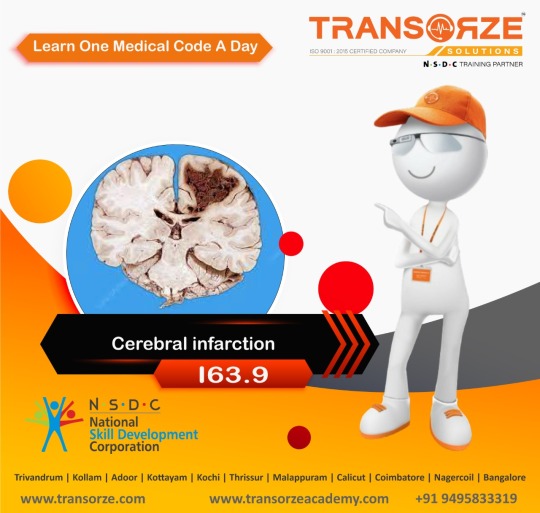#Cerebral infarction
Explore tagged Tumblr posts
Text
Vascular dementia: when cerebral vessels are damaged
Vascular dementia is a neurodegenerative disease that leads to a progressive deterioration in cognitive function. It is caused by problems with blood circulation in the brain, which deprive brain cells of the oxygen and nutrients they need to function properly.

How does vascular dementia develop?
Imagine your brain as a city. The arteries are the roads that carry the fuel (oxygen and nutrients) needed by the houses (the brain cells) to function. In vascular dementia, these roads are damaged, either by small blockages (such as blood clots) or by leaks (small haemorrhages). The houses then no longer receive enough fuel and begin to die, leading to the symptoms of dementia.
What causes vascular dementia?
The main causes of vascular dementia are linked to cardiovascular problems:
- Strokes: Blood clots block the arteries in the brain, causing damage.
- Diseases of the arteries: Atherosclerosis (accumulation of plaque in the arteries) and high blood pressure damage the cerebral vessels and increase the risk of blood clots forming.
- Small cerebral infarctions: Very small strokes that often go unnoticed but which, if repeated, can cause significant damage to the brain.
What are the symptoms of vascular dementia?
The symptoms of vascular dementia can vary from person to person and depend on the area of the brain affected. The most common symptoms are
- Memory problems: Difficulty remembering recent events, learning new information or finding words.
- Language problems: Difficulty finding the right words, understanding what is said or repeating sentences.
- Attention and concentration problems: Difficulty following a conversation, concentrating on a task or making decisions.
- Behavioural changes: Irritability, apathy, disorientation, sleep disorders.
- Gait problems: Difficulty walking, loss of balance, stiffness.
How is vascular dementia treated?
There is no cure for vascular dementia, but treatments aim to slow the progression of the disease and improve the patient's quality of life. They may include
- Treatment of risk factors: Control of high blood pressure, diabetes, cholesterol, stopping smoking.
- Medication: To treat symptoms such as memory problems or behavioural disorders.
- Rehabilitation: To maintain functional capacity and improve independence.
- Comprehensive care: Involving the family, carers and healthcare professionals.
Additional key words: stroke, atherosclerosis, cerebral infarction, cognitive disorders, loss of independence, cerebral ageing.
Go further
#stroke#atherosclerosis#cerebral infarction#cognitive disorders#loss of independence#cerebral ageing
0 notes
Text
When the Stroke Hits You
by Dr.Harald Wiesendanger– Klartext What the mainstream media is hiding Suddenly severely disabled: A stroke can have dire consequences that are often irreversible. In the worst case, it kills. Preventing it is one of the best reasons for a healthy lifestyle, as the AUSWEGE Foundation recommends to everyone. Does a Covid-19 “vaccination” increase the risk? You’ve just filled the shopping cart…

View On WordPress
#Arteriosclerosis#Atrial fibrillation#Cerebral hemorrhage#Cerebral infarction#Covid-19 vaccination#Covid-19mRNA vaccines#Diabetes#Harald Wiesendanger#hemorrhagic stroke#International Stroke Day#ischemic stroke#metabolic syndrome#SARS-CoV-2 infection#Stroke#Vaccine side effects
0 notes
Text



シュラバ婚〜もう一度夫に恋するチャンスを下さい〜 エピソード版最新8-後半、U-NEXTさん先行配信開始しました。
脳梗塞で突然倒れた漫画家の竹子に残った後遺症、それを支える夫。想像していた夫との新婚生活は「こんなはずじゃなかった」の連続で…。
竹姫先生の体験を元にした原作を��ミカライズさせて頂きました。
8話後半が配信されました。随時各配信会社さんでも配信予定。シュラバ婚か作家名で検索してください。レビューもください低評価でもいいのでください(※低評価でもなんでも、とにかく"反応がある"ほうが"反応がない"よりもランクがあがるので)
1巻も配信中です~!(各配信会社さんにもあります)
0 notes
Text
youtube
1 note
·
View note
Text
Also in relation to the Kalista post/headcanon:
This is a very big welcome for any of the Shadow Islers (Or any other muse that his magic wouldn’t work on) to feel free to bully Vlad some time~ Gods know this man needs his ego taken down a notch from time to time~
#[out of blood] - out of character#Sorry for the flux of posts#my brain is in distracting mode now#family issues which keep rising up#tl;dr dad in ICU in and out due to a cerebral infarction from two weeks ago#so my activity remains spotty at best
2 notes
·
View notes
Video
youtube
『介護過程』Bさんが作業中に大声を出した理由とは?【介護福祉士国家試験対策 2025年 独学サポート】
#youtube#介護福祉士国家試験 第36回 〔事 例〕 Bさん(50 歳、男性、障害支援区分 3 )は、49 歳のときに脳伷塞(cerebral infarction) を発症し、左 ひだりかたまひ 片麻痺で高次脳機能障害(h
0 notes
Text
#cerebral#infarction#stroke#awareness#brainhealth#brainattack#preventstroke#healthybrain#aapc#health#career#opportunity#who#healthcare#companies#vacancies#NSDC#education#skill#Medical#Transcription#coding#scribings#kerala#india#nationalinstituteofmedicalcoding
0 notes
Text

The WHO has classified Unspecified cyst of jaw and assigned it the ICD-10 code M27. 40 for medical classification purposes under the range - Diseases of the musculoskeletal system and connective tissue .
For More Details :
🌐 www.transorze.com
☎ +919495833319
#cerebral#infarction#stroke#awareness#brainhealth#brainattack#preventstroke#healthybrain#exercise#transorze#AAPC#CPC#NSDC#skills#education#medical#coding#WHO
0 notes
Text

The WHO has classified Unspecified cyst of jaw and assigned it the ICD-10 code M27. 40 for medical classification purposes under the range - Diseases of the musculoskeletal system and connective tissue .
For More Details :
🌐 www.transorze.com
☎ +919495833319
#cerebral#infarction#stroke#awareness#brainhealth#brainattack#preventstroke#healthybrain#exercise#transorze#AAPC#CPC#NSDC#skills#education#medical#coding#WHO
0 notes
Text
Also preserved in our archive
From November 2022
By Cate Swannell
IF further proof was needed that infection with SARS-CoV-2 has long-term sequelae for the human body, research led by Monash University has provided it, highlighting the need for GPs and other frontline physicians to be aware of their patients’ COVID-19 history.
The research, led by epidemiologist and PhD candidate Stacey Rowe, and coauthored by Victorian Chief Health Officer Professor Brett Sutton and renowned infectious disease epidemiologist Professor Allen Cheng, among others, is published by the MJA.
“Essentially what we wanted to do was look to see what sort of hospitalisations might have been associated with having COVID-19 – did it cause other than respiratory complications, for example,” Ms Rowe told InSight+.
Rowe and colleagues analysed population-wide surveillance and administrative data for all laboratory-confirmed COVID-19 cases notified to the Victorian Department of Health from 23 January 2020 to 31 May 2021 – prior to the vaccination rollout and the appearance of the Omicron variant – and linked hospital admissions data (admission dates to 30 September 2021).
“A total of 20 594 COVID-19 cases were notified, and 2992 people (14.5%) were hospitalised with COVID-19,” Rowe and colleagues reported in the MJA.
“The incidence of hospitalisation within 89 days of onset of COVID-19 was higher than during the baseline period for several conditions, including myocarditis and pericarditis (IRR, 14.8; 95% CI, 3.2–68.3), thrombocytopenia (IRR, 7.4; 95% CI, 4.4–12.5), pulmonary embolism (IRR, 6.4; 95% CI, 3.6–11.4), acute myocardial infarction (IRR, 3.9; 95% CI, 2.6–5.8), and cerebral infarction (IRR, 2.3; 95% CI, 1.4–3.9).”
In other words, says Ms Rowe, “there are considerable risks associated with SARS-CoV-2 infection” beyond the initial COVID-19 illness.
“You are 15 times more likely to acquire myocarditis requiring hospitalizations following COVID-19 compared with beforehand,” she said.
“Things like heart attacks, or acute myocardial infarction occur quite proximally to getting COVID infection, but other conditions such as the clotting conditions – pulmonary embolism, for example — that risk was highest later in the course of COVID illness, highest around 14 to 60 days following COVID illness.”
Other results were also telling.
“The incidence of hospitalisation with cerebral infarction was twice as high after COVID-19 onset as during the baseline period,” Rowe and colleagues wrote. “Other investigators (here, here and here) have estimated the risk of stroke to be 2–13 times as high for people with COVID-19.”
Professor Cheng, speaking with InSight+, said with testing and tracing of positive COVID-19 cases now not mandatory in Australia, it was harder to know just who has had COVID.
“What this study does suggest is that [the possibility of a previous COVID illness] should be on the radar, because there is a window of elevated risk,” he said.
“If someone presents with, say, chest pain, within a couple of months of having COVID, we really need to be attentive to that, because it’s probably a bit more likely that pain does represent a myocardial infarction than at other times.
“You can’t say that every heart attack that happens after COVID is due to COVID. But there is a period of elevated risk, and it seems to be close to when you got COVID.”
Rowe and colleagues recommend vaccination and “other mitigation strategies”.
“Our findings indicate the need for ongoing COVID-19 mitigation measures, including vaccination, and support the early diagnosis and management of complications in people with histories of SARS-CoV-2 infection,” they wrote.
“The pathophysiological mechanisms underlying symptom persistence and the development of major complications still need to be elucidated, the prevalence of the post-COVID-19 condition (by vaccination status) established, and the risks of complications following vaccination quantified.”
Professor Cheng told InSight+:
“What [this study] does show is you’re better off not getting COVID and whatever way that you do that is probably a good thing.
“Vaccination is the simplest way to protect yourself from getting COVID, but it’s not perfect. Not going out when there’s a lot of COVID out there, wearing masks, improving ventilation and all those other things, are also important.”
At one point in the MJA article the authors wrote:
“Some COVID-19 complications clinically resemble those reported after vaccination against SARS-CoV-2, which is important when evaluating putatively post-vaccination adverse events. Further, we found that the incidence of hospitalisation with severe cardiac and thrombo-embolic events after SARS-CoV-2 infection was higher than the reported risk of these events after vaccination.”
Ms Rowe told InSight+:
“What we found with this study, and what other studies have found internationally is the risk of myocarditis is higher following SARS-CoV-2 infection, than it is following vaccination.
“While people [who feel they have been injured by the vaccine] might grab on to that, there are lots of studies now demonstrating that the risk is higher following infection, than it is following vaccination.”
Professor Cheng agreed.
“It’s important to acknowledge that people do get side-effects after vaccination – myocarditis happens, often after the second dose, usually within a day or so,” he said. “That’s very unambiguously due to vaccination.
“But the question from a public health point of view is, do the benefits outweigh the risks. COVID itself can cause myocarditis at a higher rate [than vaccination]. And that means you’re still better off getting vaccinated.”
Ms Rowe said the study showed that COVID-19 was not a simple respiratory disease.
“These findings really demonstrate COVID-19 is a multi-organ disease, it’s not a respiratory infection. If more research can be channelled into understanding those pathophysiological mechanisms, then we can then start thinking about how best we can prevent these.”
Study link: www.mja.com.au/journal/2023/218/1/associations-between-covid-19-and-hospitalisation-respiratory-and-non
#mask up#public health#wear a mask#pandemic#covid#wear a respirator#covid 19#still coviding#coronavirus#sars cov 2
41 notes
·
View notes
Text
Sylvian involvement: two facets of the same disease
The middle cerebral artery (MCA), located deep in the Sylvius scissure, is one of the main arteries supplying blood to the brain. When it is blocked, this leads to a cerebrovascular accident (CVA). The consequences of a stroke vary depending on the area of the brain affected, i.e. whether the obstruction affects superficial structures (cerebral cortex) or deep structures (grey nuclei, internal capsule). There are two types of sylvian involvement: superficial and deep.

Superficial sylvian involvement
Superficial sylvian involvement corresponds to obstruction of a branch of the ACM supplying the surface of the brain. Symptoms are often characteristic and include
- Hemiplegia: Paralysis of one side of the body, mainly affecting the arm and face (brachiofacial hemiplegia).
- Sensory disorders: Decrease or loss of skin sensitivity in the same hemi-body as the hemiplegia.
- Hemianopia: Loss of half the visual field.
- Language disorders (aphasia) in cases of damage to the dominant hemisphere (generally the left), affecting the comprehension or production of language.
Deep sylvian involvement
Deep sylvian involvement corresponds to obstruction of a perforating arteriole, a small branch of the ACM, supplying deep brain structures such as the lenticular nucleus and the knee of the internal capsule. Symptoms are slightly different and include
- Global hemiplegia: Paralysis affecting all limbs on the same side of the body in a proportional manner.
- Fine motor disorders: Difficulty making precise movements with the hands.
- Fewer sensory disorders than in superficial involvement.
Why is this distinction important?
The distinction between superficial and deep sylvian involvement is essential for several reasons:
- Prognosis: The course and sequelae may vary depending on the type of damage. For example, language disorders associated with superficial damage may be more difficult to recover from than motor disorders associated with deep damage.
- Treatment: Treatment strategies may be adapted according to the location of the lesion. For example, rehabilitation will be different for brachiofacial hemiplegia and global hemiplegia.
- Research: Understanding the pathophysiological mechanisms of each type of injury enables new therapeutic strategies to be developed.
Go further and contact
#ischaemic stroke#middle cerebral artery#sylvian territory#cerebral infarction#hemiplegia#aphasia#neurological rehabilitation#brain imaging
0 notes
Text



Paramedic Report
Incident Number: 2024-07-08-DK-0562 Patient Name: Darren Kozlowski Age: 31 Sex: Male Height: 6’1” Weight: Approx. 185 lbs Date of Incident: July 8, 2024 Time of Call Received: 10:12 AM
Incident Description: Emergency services were dispatched to a trail located in Riverbend Park following an alert from the patient’s smartwatch, which detected a suspected cardiac event. Bystanders reported finding the patient collapsed approximately 1.3 miles into the trail. The patient was unresponsive and pulseless upon paramedic arrival at 10:22 AM.
Initial Assessment:
Airway: Clear
Breathing: Apneic
Circulation: No palpable pulse; asystole confirmed on ECG
Skin Condition: Cool, pale, diaphoretic
Interventions (On-Site):
CPR initiated: High-quality chest compressions performed immediately upon arrival.
Defibrillation: Delivered one shock (200J) following identification of ventricular fibrillation (VF) on ECG. VF converted to sinus rhythm; ROSC (Return of Spontaneous Circulation) achieved at 10:27 AM.
Medications Administered:
1 mg Epinephrine IV every 3–5 minutes during CPR (3 doses given).
300 mg Amiodarone IV push following initial shock.
Transport to Hospital:
Time En Route: 15 minutes
Condition During Transport: Patient deteriorated en route, suffering a second cardiac arrest at 10:33 AM. Aggressive CPR was resumed with defibrillation (2 shocks, 200J each) and ROSC achieved at 10:38 AM.
Vital Signs Pre-Hospital Arrival:
Heart Rate: 48 bpm (weak, irregular)
Blood Pressure: 72/50 mmHg
SpO2: 82% (on 100% O2 via BVM)
Hospital Arrival:
Time of Arrival: 10:44 AM
Patient presented with recurrent arrhythmia, hypotension, and altered mental status. Handoff provided to ER staff for advanced resuscitation.
Autopsy Report
Patient Name: Darren Kozlowski Case Number: ME-2024-894 Age: 31 Sex: Male Date of Death: July 8, 2024 Time of Death: 11:03 AM Performed By: Dr. Laura Mendelson, MD, Forensic Pathologist Location: County Medical Examiner’s Office
External Examination:
Height: 6’1”
Weight: 185 lbs
Build: Lean and fit; well-developed musculature.
Hair: Short blonde hair and beard.
Eyes: Blue.
Distinguishing Features: None noted.
External Trauma:
Rib fractures (bilateral, 3rd–6th ribs) consistent with CPR.
Bruising along the sternum.
Minor abrasions on knees and hands from collapse.
No other injuries identified.
Internal Examination:
Heart:
Weight: 375 grams (normal range: 280–340 grams).
Severe coronary artery disease identified:
95% occlusion of the left anterior descending artery (LAD).
80% occlusion of the right coronary artery (RCA).
Evidence of acute myocardial infarction (MI) involving 40% of the left ventricle, with microscopic examination confirming recent myocardial necrosis and hemorrhage.
Mild left ventricular hypertrophy noted (wall thickness: 1.5 cm).
Lungs:
Pulmonary congestion and edema (weight: 750 grams per lung).
No evidence of pulmonary embolism.
Other Organs:
Liver: Mild steatosis.
Kidneys: Acute tubular necrosis, likely secondary to hypoperfusion during cardiac arrest events.
Brain: Mild cerebral edema, no gross signs of anoxic injury.
Toxicology Results:
Negative for alcohol, illicit drugs, and prescribed medications.
Positive for mild caffeine levels consistent with normal consumption.
Cause of Death: Acute myocardial infarction due to severe coronary artery disease, complicated by multiple cardiac arrests.
Manner of Death: Natural.
Pathologist’s Summary: The decedent, a 31-year-old male, succumbed to complications from a severe heart attack while running. Advanced resuscitation efforts successfully restored circulation twice; however, irreversible cardiac damage and circulatory collapse led to his death. Contributing factors include undiagnosed atherosclerosis and left ventricular hypertrophy, suggesting a predisposition to cardiac events under physical exertion.
18 notes
·
View notes
Text
Science joke
(this one is a bit dark) Two people walk into a bar. The first person orders H2O. The other says: "I'll have H2O too!" The second one dies. (Explanation for people that aren't so interested in chemistry: H2O is water. H2O2 is hydrogen peroxide which results into inhalation or ingestion of high concentrations of hydrogen peroxide may result in seizures, cerebral infarction, or cerebral embolism causing the second one to die. Because the second person said H2O too it sounds like H2O2)
11 notes
·
View notes
Text
My dad got a cerebral infarction, a brain stroke, when he was visiting me Saturday.
Well, technically speaking few days before, but he's so goddamn stupid that he didn't go to a hospital. And neither was getting him to go an easy operation for me either. It took all methods of psychological warfare starting from a plea to emotion, going through quilt tripping, scaring and ending with threaths.
Anyway, the doctor gave him a checkup and medication. My sister pays a visit today, and cos she's a nurse by education, she can valuate how bad it was.
The thing is tho, I wish to help my dad. I am here for it, but it hurts that he has to make the villain his personal movie whimsy. I am seriously not a nag - but if you force me to, then that's what get.
13 notes
·
View notes
Text
‘American Pickers’ Star Frank Fritz’s Cause of Death Revealed
The cause of death has been revealed for former American Pickers co-host Frank Fritz just one month after he died at age 60.
A death certificate obtained by TMZ showed that Fritz died of “late sequela of cerebral infarction.” As noted by Deadline, he died from a “stroke resulting from cerebral vascular disease, with aortic stenosis and COPD also contributing to his death.”
“Cerebral vascular disease effects blood vessels in the brain and cerebral circulation, while aortic stenosis restricts blood flow from the heart to the rest of the body,” noted Deadline.
Fritz died in late-September of this year after co-hosting the history channel series for 10 years between 2010 and 2020. The show famously featured him and co-host Mike Wolfe traveling the country buying rare American artifacts from collectors to either resell or add to their collection.
“It’s with a broken heart that I share with all of you that Frank passed away last night,” Mike Wolfe announced at the time of Fritz’s death.
“I’ve [known] Frank for more than half my life and what you’ve seen on TV has always been what I have seen, a dreamer who was just as sensitive as he was funny. The same off camera as he was on, Frank had a way of reaching the hearts of so many by just being himself,” he added. “We’ve been on countless trips and shared so many miles and I feel blessed that I was there by his side when he took one last journey home. I love you buddy and will miss you so much I know [you’re] in a better place.”
3 notes
·
View notes
Note
I have brain damage too. (Stroke in 2018, that counts right? Also im not old, just unlucky ig) and I've been dealing with dystonia and spasticity in my right side, do you have any way of coping with movement disorders when you've tried literally everything and nothings helped?
omg hiii yes that absolutely counts!! we are pretty sure my issue is vascular as well although not as severe as a stroke, it’s basically a series of mini or partial strokes (“incomplete infarctions”). so major solidarity!!
could you clarify what you mean by coping – like physically adapting to symptoms, or emotionally dealing with the fact that nothing has worked? honestly i wish i had more advice for you but i am not doing super well at either so far 😅
as far as physically, my pcp gave me a muscle relaxer (tizanidine) that like, doesn’t stop my dystonia & involuntary movements but does make it less painful / less likely to get muscle cramps, and honestly it’s a plus that it makes me so sleepy because often my movement stuff makes it really difficult to sleep, so it can knock me out when i get desperate. that might already be on the list of stuff you’ve tried though so i’m sorry if that’s unhelpful!
emotionally like, i am super lucky because my gf & roommate are really anti-ableist & supportive so they help me with a lot, but it’s still just. really overwhelming especially when there isn’t much representation in disability spaces especially among young people.
while in practice i’ve found it more beneficial to refrain from separating my body from my “self”, i’ve kinda been shoehorning my experiences into media narratives of loss of bodily control in other ways, especially demonic possession because the stereotypical representation of that really resembles the types of involuntary movements i have. it’s a mixed bag & i definitely have complicated feelings about it lol.
i’m also really fortunate to have a couple friends with cerebral palsy & we’ve related a lot to each other’s experiences – there’s probably even more of an overlap with yours because my dystonia is usually, like, “between” more flailing-type involuntary movements rather than consistent on its own & i don’t experience much if any spasticity. but being able to joke about being afraid of breaking plates or spasming when you’re trying to have sex has been a huge source of comfort for me.
if people would be interested i’d be happy to make a super informal discord just to have a place to be like “wow this fucking sucks”? full disclosure i am super not cut out for like intensive Official Moderation shit more like just, this is a group chat & i just happen to be the one who made it, we’ve mutually agreed to be respectful, etc. & regardless, as always my dms + inbox are super open & i’m happy to share my discord if you wanna chat.
i wish i had more coping mechanisms to offer that aren’t just “loud music, sex jokes, & projecting onto sam winchester” lmfao but that’s where i’m at right now, tbh it’s just really comforting to hear from people dealing with the same shit even if there isn’t much we can do about it. again i’d love to talk more if you want & i’m super wishing you the best 💓💓
13 notes
·
View notes